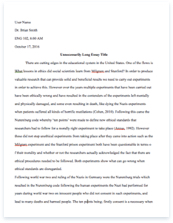How the Poems “What Were They Like” and “Vultures” Present the Cruelty of War
A limited time offer! Get a custom sample essay written according to your requirements urgent 3h delivery guaranteed
Order NowBoth poems, “What Were They Like” (WWTL) and “Vultures” has conflict as a common theme. “WWTL” is about the Vietnam war and the lasting effect of war on the culture, whereas “Vultures” is loosely about WWII and the conflict between good and evil.
One of the ways that Levertov presents the cruelty of war in “WWTL” is through the ignorance of those in conflict. The structure of the poem takes the form of question and answer, which could perhaps be seen as a soldier asking a person of a higher status, because of the use of ‘sir’. By asking about the past, the soldier is ignorant of the effect that he has on the ‘people of Viet Nam’. In the same way the ‘Daddy’ in “Vultures” ignores the ‘fumes of human roast’; but action cannot be without consequence, which causes the experience ‘clinging rebelliously’. Here both poets imply that not knowing the consequences of war is the cruellest act of all, otherwise lives and culture would not be lost.
In “Vultures”, the cruelty of war is also shown through the conflict of good and evil. Achebe contrasts the beauty of ‘love’ to the ugliness of vultures; this shows that those at conflict can unite even with their differences. He admires the ‘pebble on a stem’ as well designed, similar to that of a tank, but at the same time well designed machines could also be cruel. The father in the poem is similar to the vultures. He would carry out horrific tasks at ‘Belson Camp’, yet afterwards he could treat his children to chocolates. The use of ‘tender offspring’ here is a direct comparison to the love of vultures for their offspring. Another way to show this is through the use of ellipsis to connect the stanzas, as there are no stanza breaks. It highlights how vultures, humans, good and evil all connect together, just like the stanzas of the poem. Along with ‘a tiny glow worm’, the poet conveys the idea that although evil is permanent in human nature, there is always a speck of love and goodness within every being because it is ‘bounteous providence’ – a god-given gift.
Comparatively, “WWTL” shows the conflict between the past and the present. The questions is are symbols of the past, and the answers are symbols of the present. The use of the past tense in the first stanza shows this way of life is a thing of the past, destroyed by the war. ‘Buds’ suggest new hope and life for the people of Viet Nam, however, after the war ‘there were no more buds’, meaning that the culture has died with the children. Levertov uses the rule of 3 – ‘ivory, jade and silver’ – in the first stanza to emphasise how precious the tradition is to the people. However in the answer, the readers get the impression that the people of Viet Nam considers this present way of life is a ‘dream’ – or rather, a living nightmare. This contrast between the past and the present emphasises the consequences of the war on Vietnam, and it underlines the poet’s compassion towards the event.
Both poems also stress the cruelty of war with the use of striking imagery. In “Vultures”, images of death is common throughout the poem, with words such as ‘bone’, ‘dead’ and ‘corpse’. However, the tone of the poem is that of warmth, which is ironic, because the descriptions are ugly. Similarly, “WWTL” also convey images of death. However, the imagery used here is more directly linked with war with the use of ‘bombs’. With the metaphors of ‘mirrors’ and ‘moths’, the metaphysical death of their culture and the cruelty of war are worsened as both objects are delicate and fragile.
In summary, both poems uses many different techniques in presenting the cruelty of war. Through these two poems, I feel that even though the context of each poem is different, the cruelty of war presented in both poems is the same no matter what or where you are.











